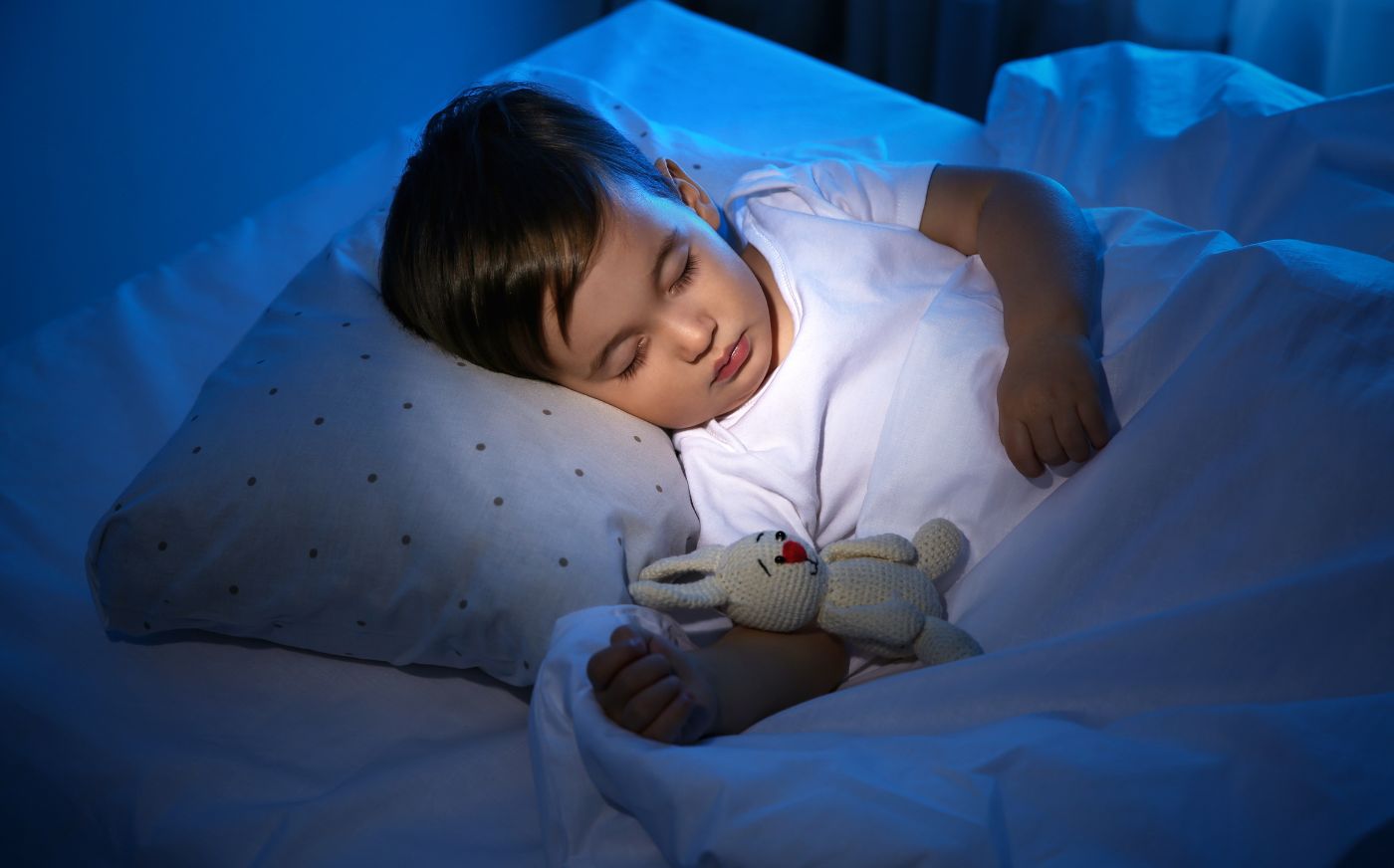Positive behaviour starts at home: practical tips for families
By Sara Asciamprener, Level 3 senior educator at N Angel Having studied Psychology with a […]
Read more

Children’s sleep patterns change as they grow, but one thing stays the same. Sleep is the foundation for their well-being and daily functioning.
Encouraging healthy sleep habits early in life helps children grow stronger and be better prepared to engage with the world around them. These habits can begin to take shape as early as a few months old, and by making thoughtful choices, you can continue to support quality sleep for your children’s development.
Getting the recommended amount of quality sleep supports children’s physical and cognitive development.
Here are the top reasons why children, especially babies and toddlers, need to get enough sleep:
Here’s a quick guide to how much sleep young children should generally get:
A slight deviation from sleep recommendations and occasional sleep struggles is usually okay. But if your child is consistently getting much less sleep than they need, it can impact their behaviour and health, and it might be time to take some action.
If your child is having trouble falling asleep or staying asleep, here are some things you can try:
Getting to know your child’s sleep habits helps you spot patterns and figure out what might be affecting their sleep.
For example, if your child is waking up earlier than you’d like in the morning, their bedtime might be too late. On the other hand, if their bedtime is too early, they might get restless or have trouble winding down, leaving them upset instead of sleepy.
Figure out the best bedtime by paying attention to when your child starts showing signs of tiredness, like rubbing their eyes or getting a little cranky. Then, aim to start their bedtime routine about 30 minutes before that so they aren’t too tired to sleep but also not so tired that they won’t settle.
If your child is in daycare or a nursery, it can be really helpful to chat with the team. They’ll tell you how your child is doing with naps, like whether they seem more or less restless during nap times or if there are any noticeable changes in behaviour after sleep.
These observations can help you pinpoint any patterns or triggers that might affect your child’s sleep, which you can keep in mind when creating their bedtime routine or adjusting their daily schedule.
For babies and toddlers, a predictable bedtime routine helps them feel secure and comfortable, letting them fall asleep faster. The best routine is one that fits your child’s needs and works for your family.
Starting the routine at the same time every night and following a similar sequence of activities means your child will be more prepared to go to sleep as bedtime approaches.
A bedtime routine usually takes about 20-30 minutes and includes a mix of quiet activities that help your child unwind.
You can start with pre-bed tasks like a bath, brushing teeth, and changing into pyjamas. Then, let your child have some quiet time, such as a few minutes of cuddling or engaging in gentle activities that don’t overstimulate them.
Try creating a ‘ritual’ that involves reading a book together, telling a story, singing a lullaby, or saying a special phrase to encourage your children to look forward to the peaceful moments before sleep.
Some parents find it helpful to include a favourite comfort object, like a soft blanket or a special toy, to help children self-soothe and fall asleep independently.
Babies and toddlers may go through phases where they resist bedtime or need extra comfort. For instance, if your child seems particularly restless one evening, you might choose to extend storytime before lights out. During these times, it’s okay to adjust your bedtime routine a little as long as you stick to the overall structure.
Limit TV, computers, and handheld devices at least one hour before bedtime to help your child unwind.
Swap screens for something more relaxing, like colouring, sensory play, or listening to a podcast, audiobook, or calming music. If your toddler is still energetic, let them burn off some steam with a quick round of “Simon Says,” running in circles, or a mini dance party. They might get overtired, though, so it’s best to keep any high-energy activities short and light.
Creating a calm, quiet, distraction-free environment is an important part of sleep training, causing your child to fall asleep faster and wake up less frequently.
Here are some common sleep disruptors and ways to manage them:
Building healthy sleep habits from an early age helps children feel more rested, emotionally balanced, and ready to engage with the world around them.
Setting up a bedtime routine, cutting down on screen time, and removing distractions like bright lights and noise can all help your child sleep better.
However, their sleep environment at nursery is also important, as a consistent nap schedule helps reinforce good sleep habits at home and prevents overtiredness during evenings.
Ideal nurseries should provide a calm, comfortable setting for naps, with cosy sleep areas, soothing lighting, and a predictable schedule that lines up with children’s natural rhythms.
N’s UK nurseries aim to help children develop quality sleep habits that support their growth and development for years to come.